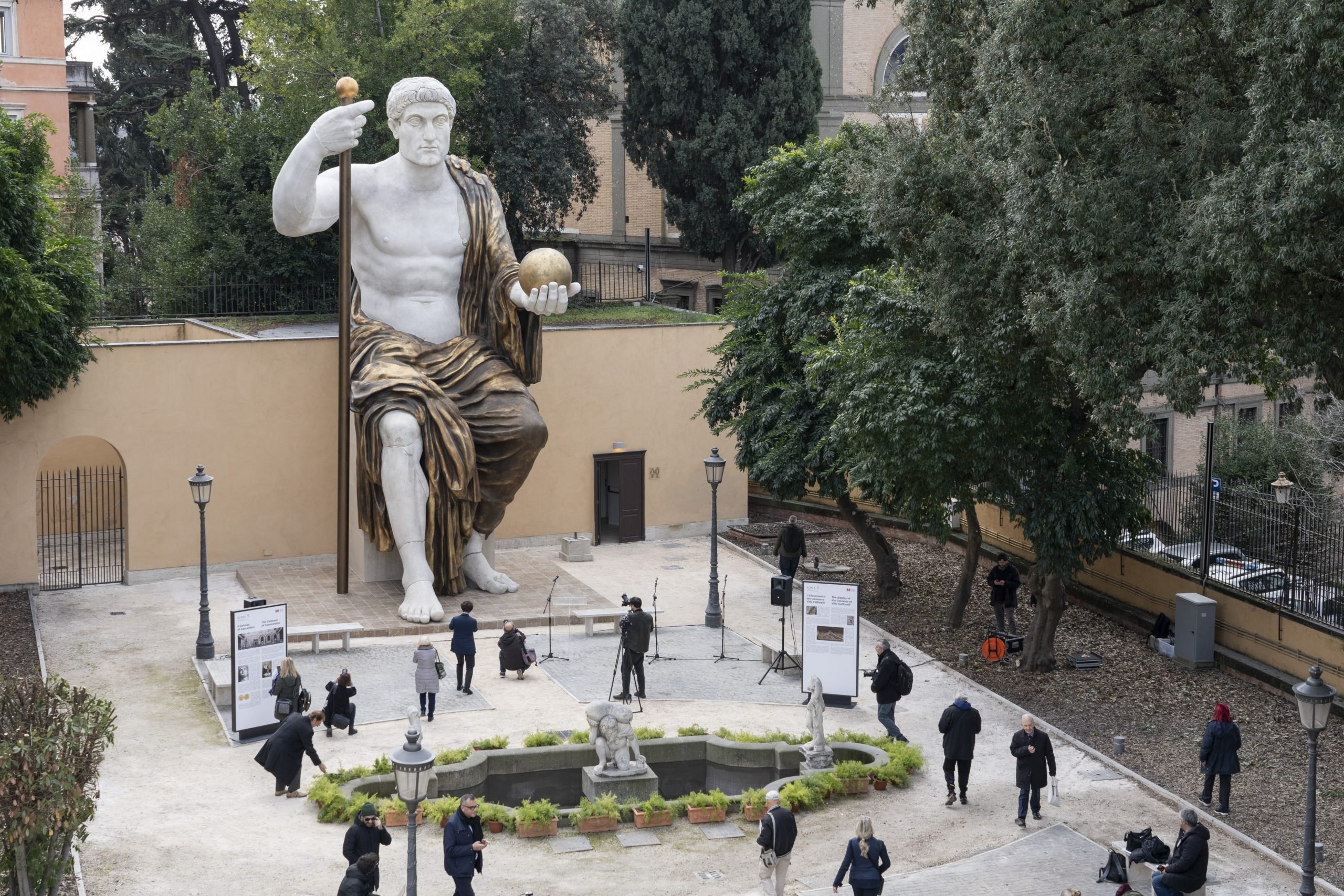
The Colossus of Constantine has returned to Rome, recreated from existing fragments with the help of latest 3D scanning and modeling technologies. Produced by the Madrid-based digital preservation nonprofit Factum Foundation, the statue was first exhibited at Fondazione Prada’s 2022 exhibition “Recycling Beauty.” Early this month, the 42-feet-tall, 1:1 facsimile of the Colossus arrived in Rome, and will remain in the garden of Villa Caffarelli of Musei Capitolini at least until 2025.
It is believed that the original Colossus, commissioned by the emperor Constantine and produced between 313 and 315 C.E. was itself a “remake,” adapting a pre-existing pagan statue. Placed in the Basilica of Maxentius, it commemorated the rule of emperor Constantine, marking his and the Roman Empire’s conversion from paganism to Christianity. This was also where the marble fragments used in the recreation of the Colossus were discovered in the 15th century, now on view at the Palazzo dei Conservatori in Rome. Missing parts of the monumental seated figure are thought to have been pillaged for bronze sometime in the late Antiquity.
The surviving portions of the statue of Roman Emperor Constantine the Great on view in a courtyard of the Capitoline Museums. Photo: Stefano Costantino/SOPA Images/LightRocket via Getty Images.
Fragments from Rome and one chest fragment from the Parco Archeologico del Colosseo were scanned using photogrammetry and a LiDAR scanner, technologies increasingly popular in heritage preservation and conservation. Missing parts of the statue were modeled by 3D sculptor Irene Gaumé in consultation with experts and curators at the Musei Capitolini and with reference to coeval statues from Ara Pacis Museum, the State Hermitage Museum in Saint Petersburg and the Museo Nazionale Romano.
In place of the original white marble and bronze clad onto a brick and wood structure, the facsimile features contemporary materials and techniques. 3D printing, reinforced resin, polyurethane, marble dust, aluminum, gold leaf, and plaster were combined to produce a durable facsimile that closely imitates original materials, Factum Foundation reported in an extensive write-up.
Detail of replica of the statue Roman Emperor Constantine that was rebuilt using 3D technology. Photo: Stefano Costantino/SOPA Images/LightRocket via Getty Images.
Digitally reconstructed parts of the statue were visually distinguished from facsimiles made from scanned fragments. “We’re not trying to build a fake object,” the founder of Factum Foundation Adam Lowe told the New York Times. “We’re trying to build something that physically and emotionally engages and that intellectually stimulates you.”